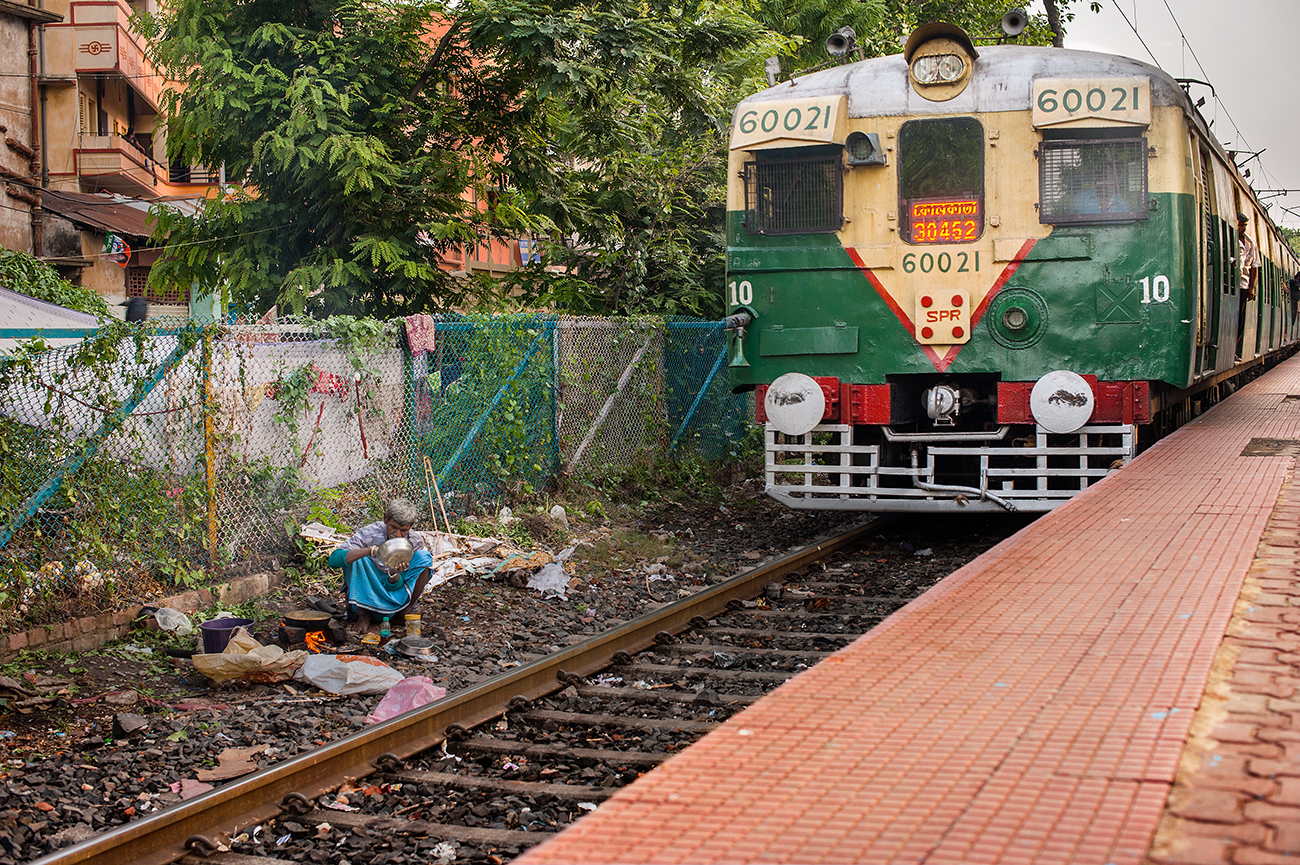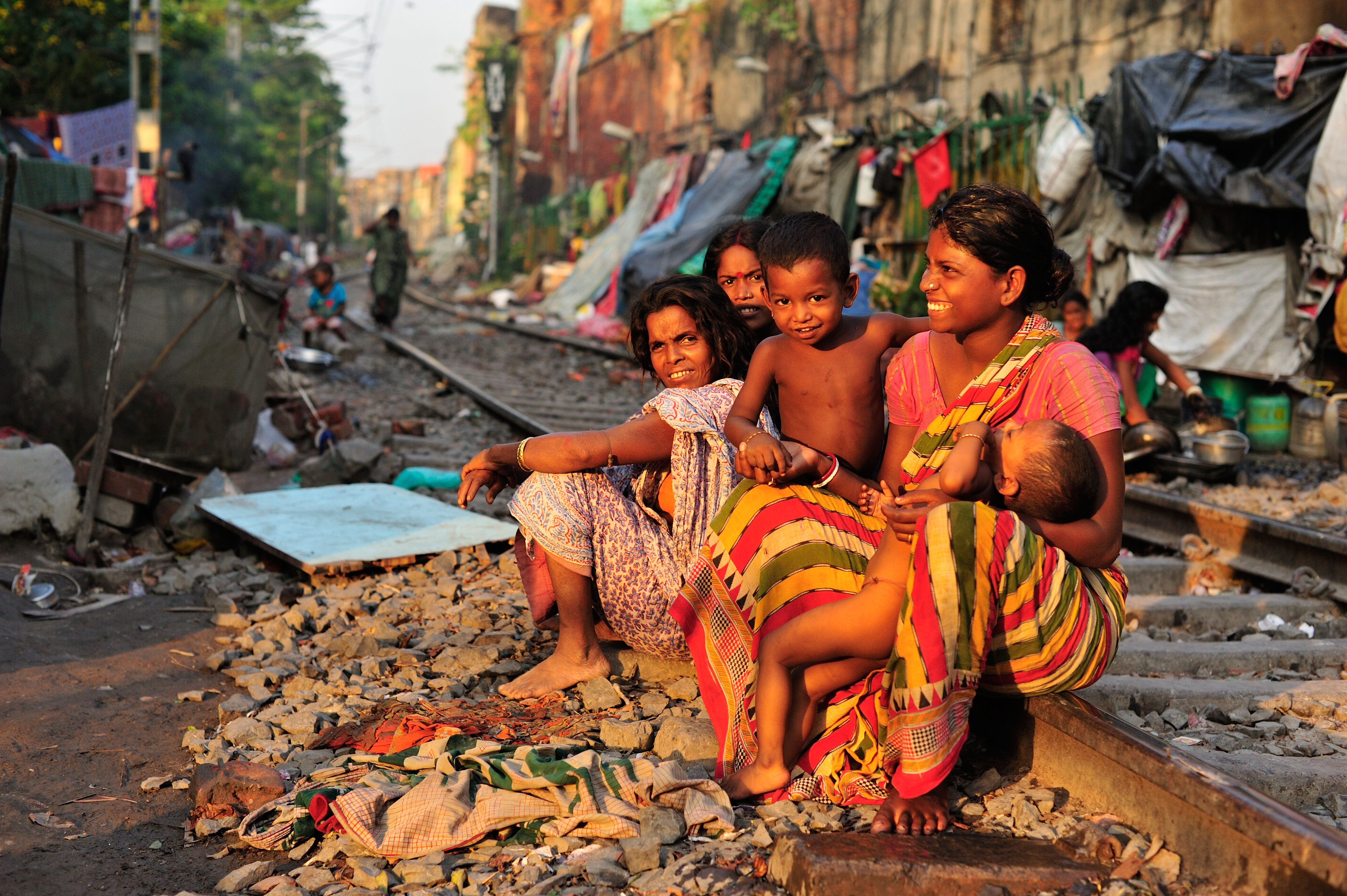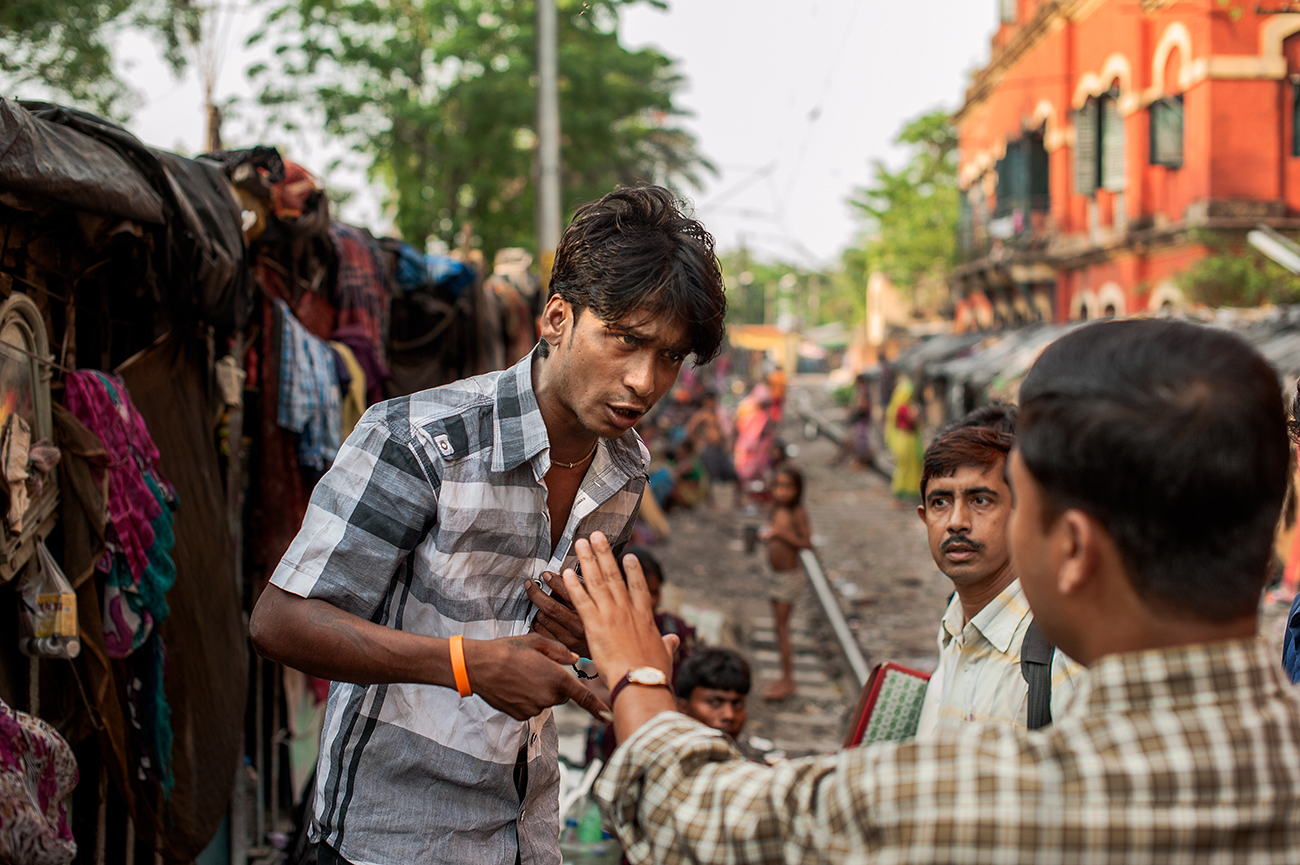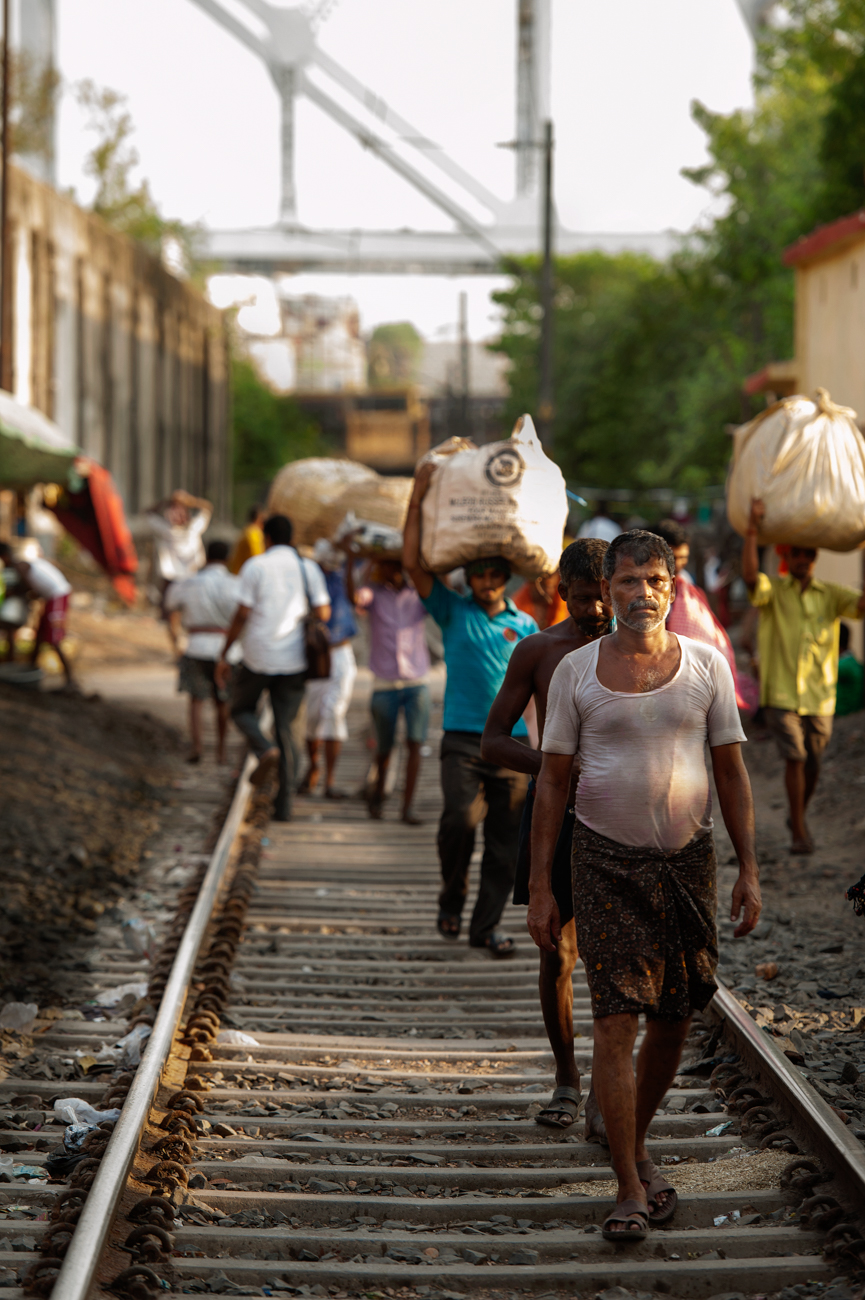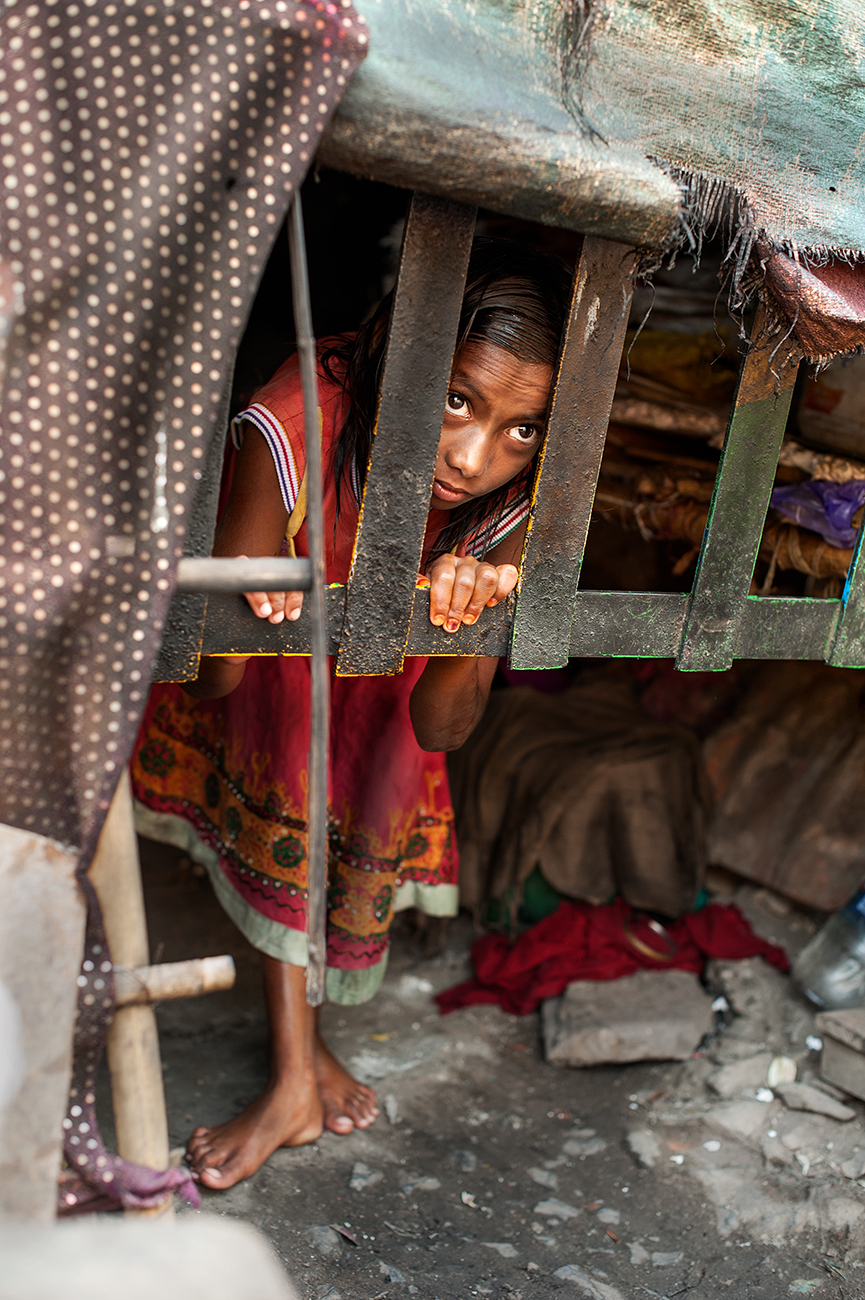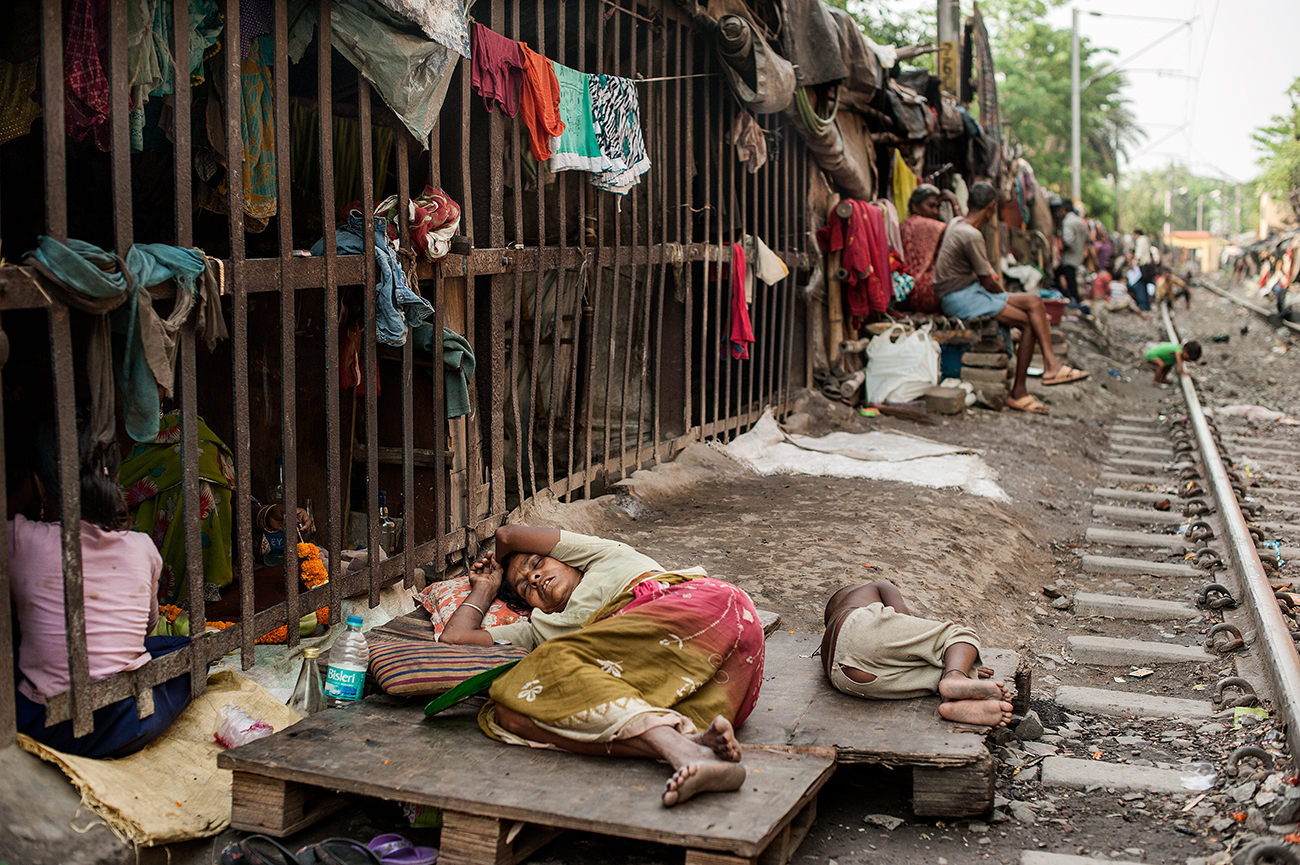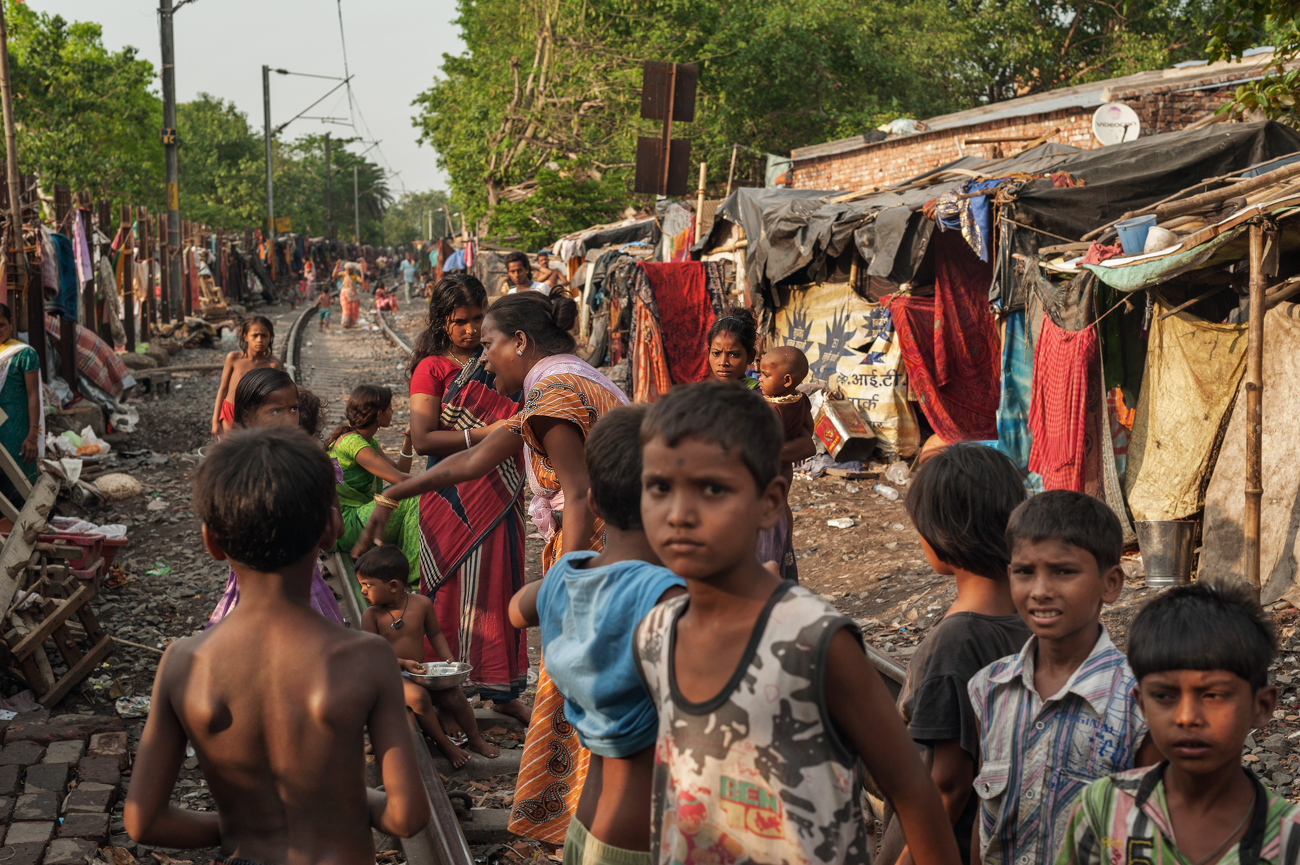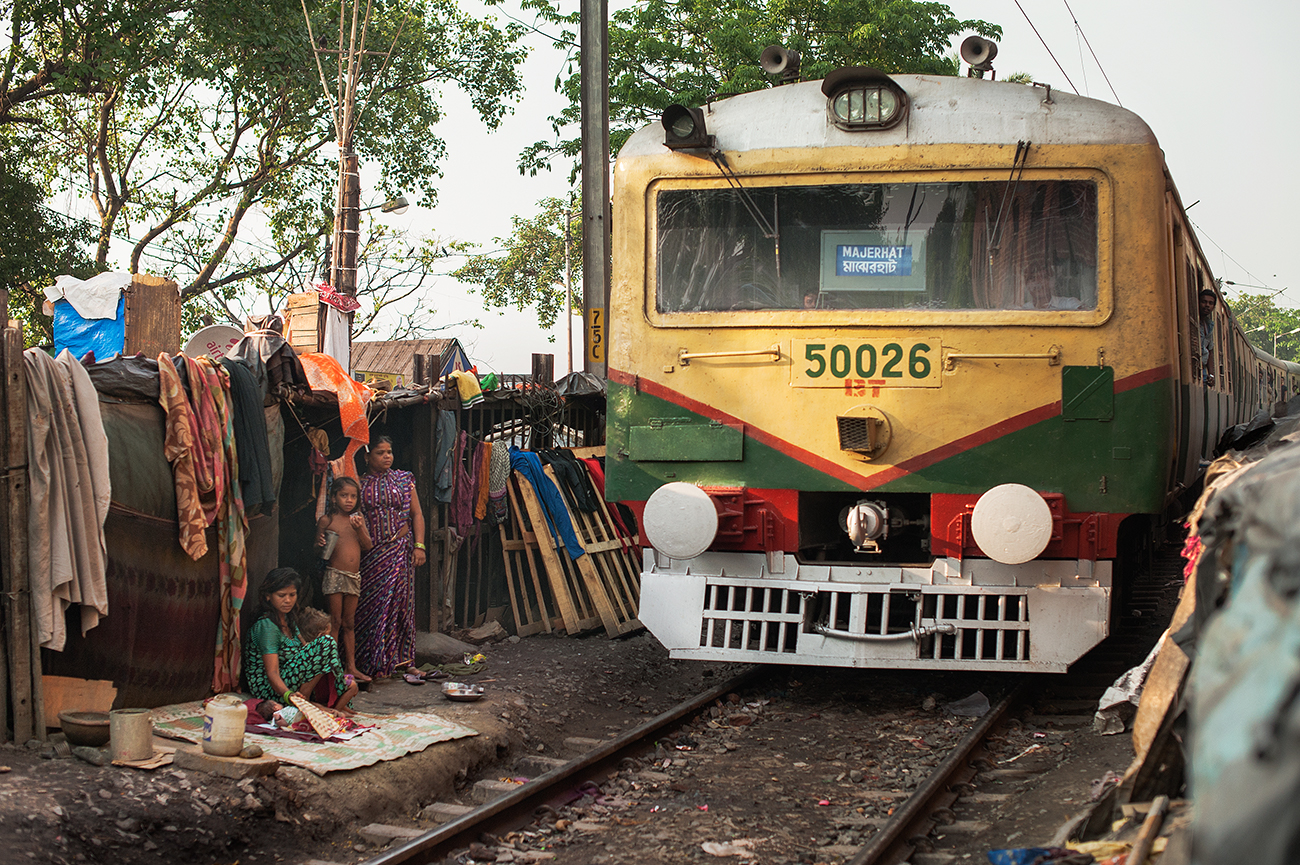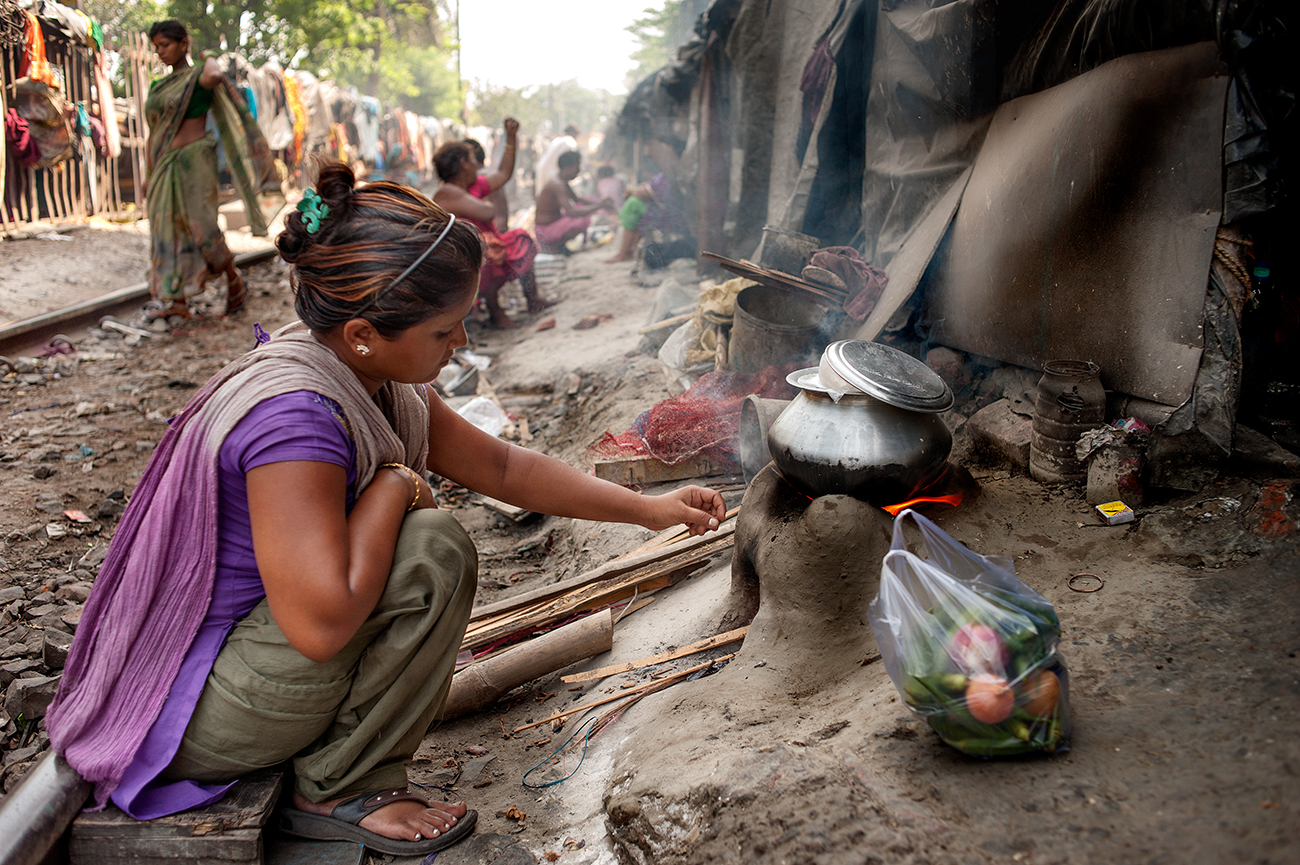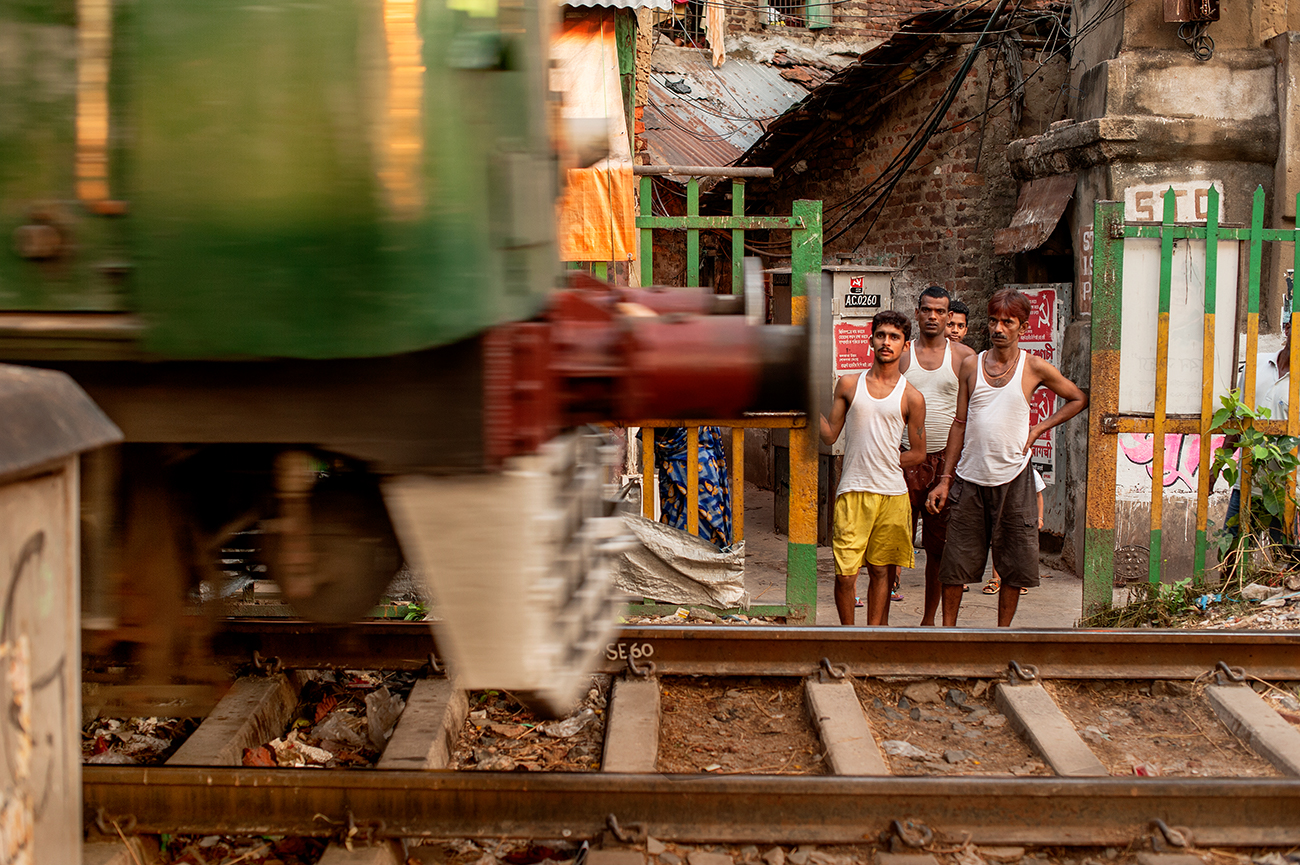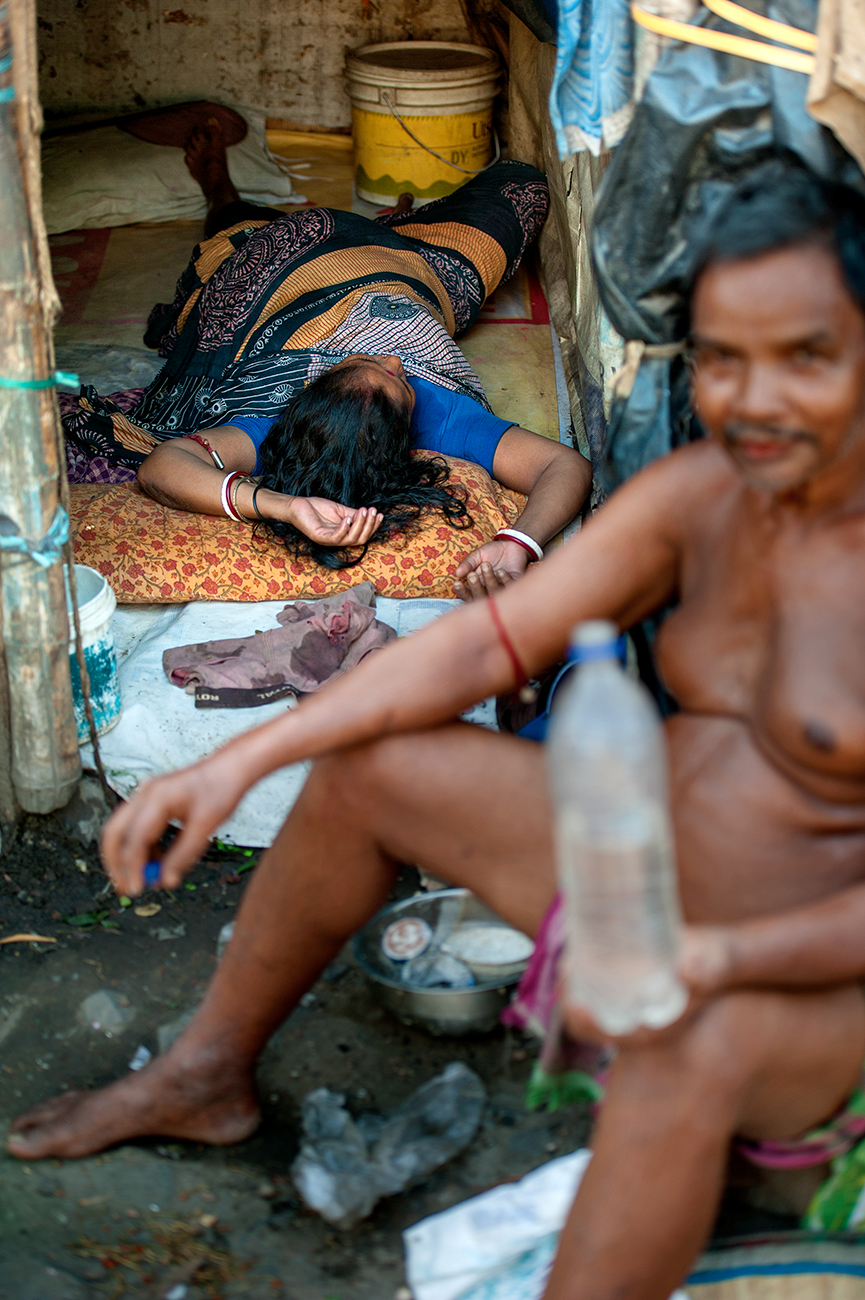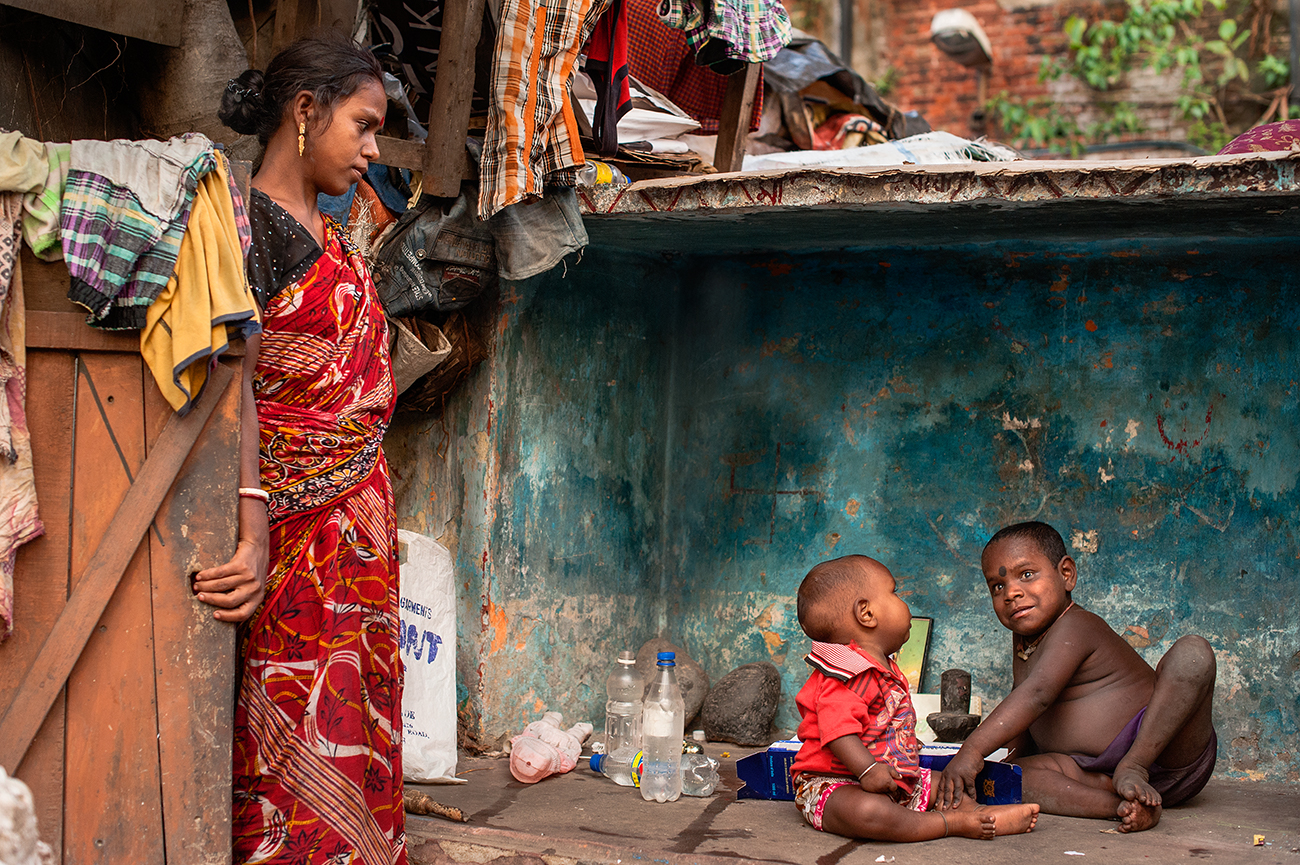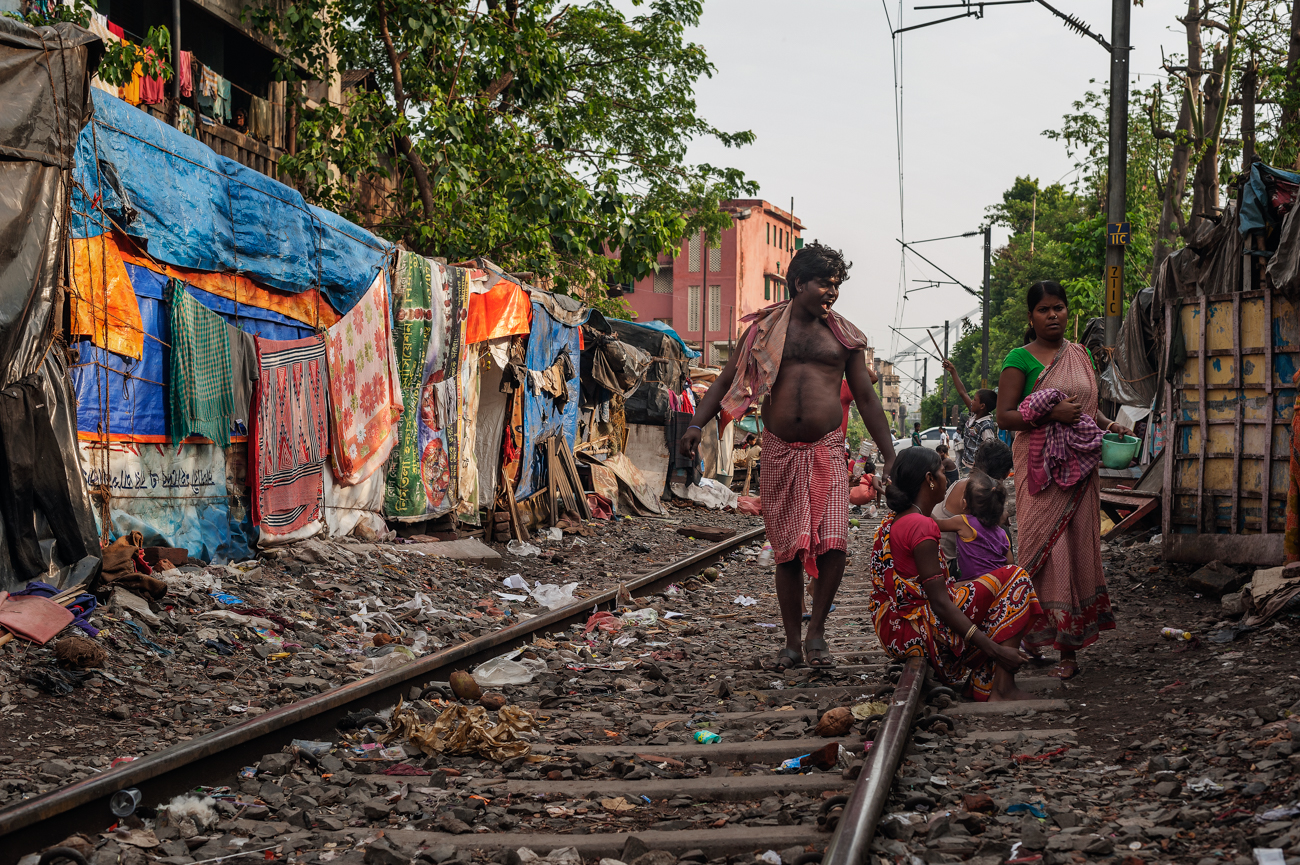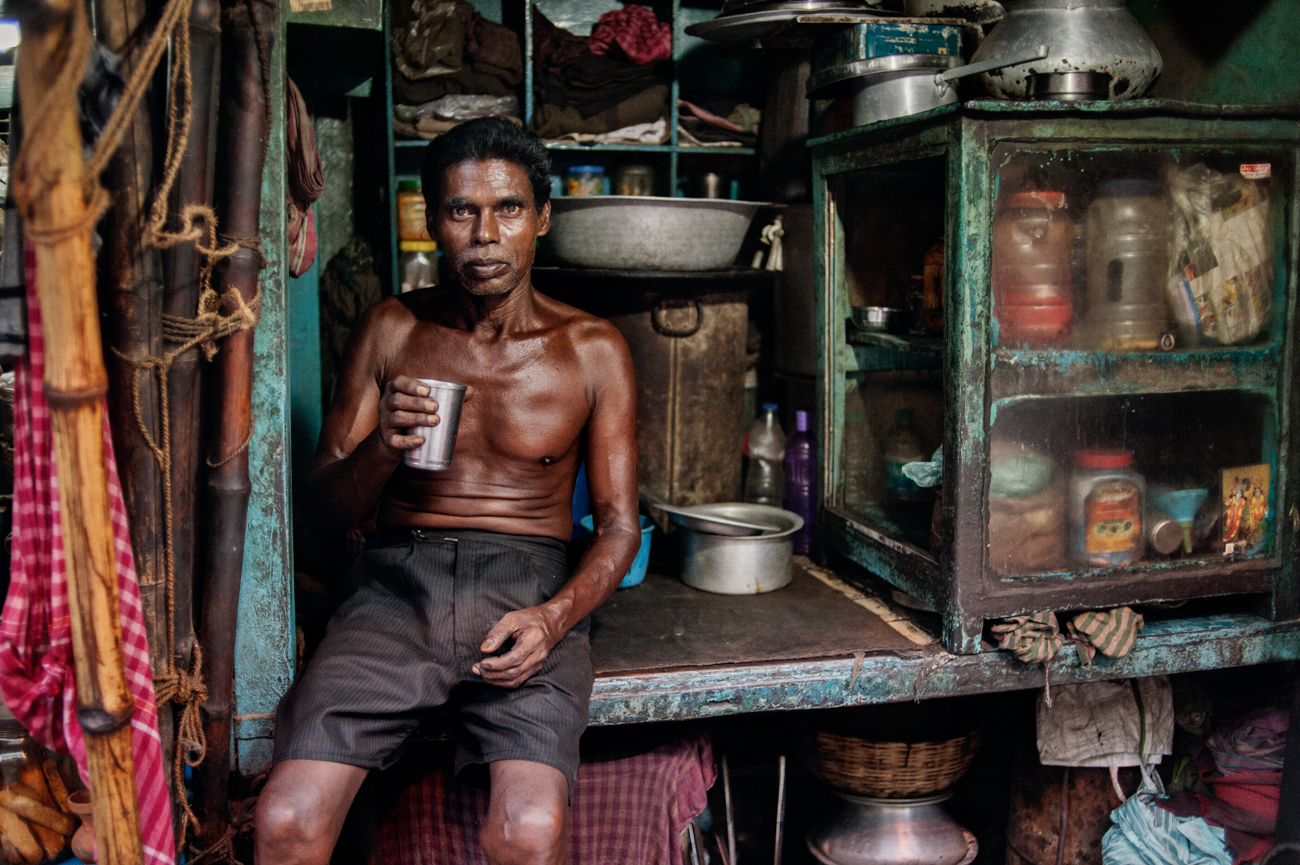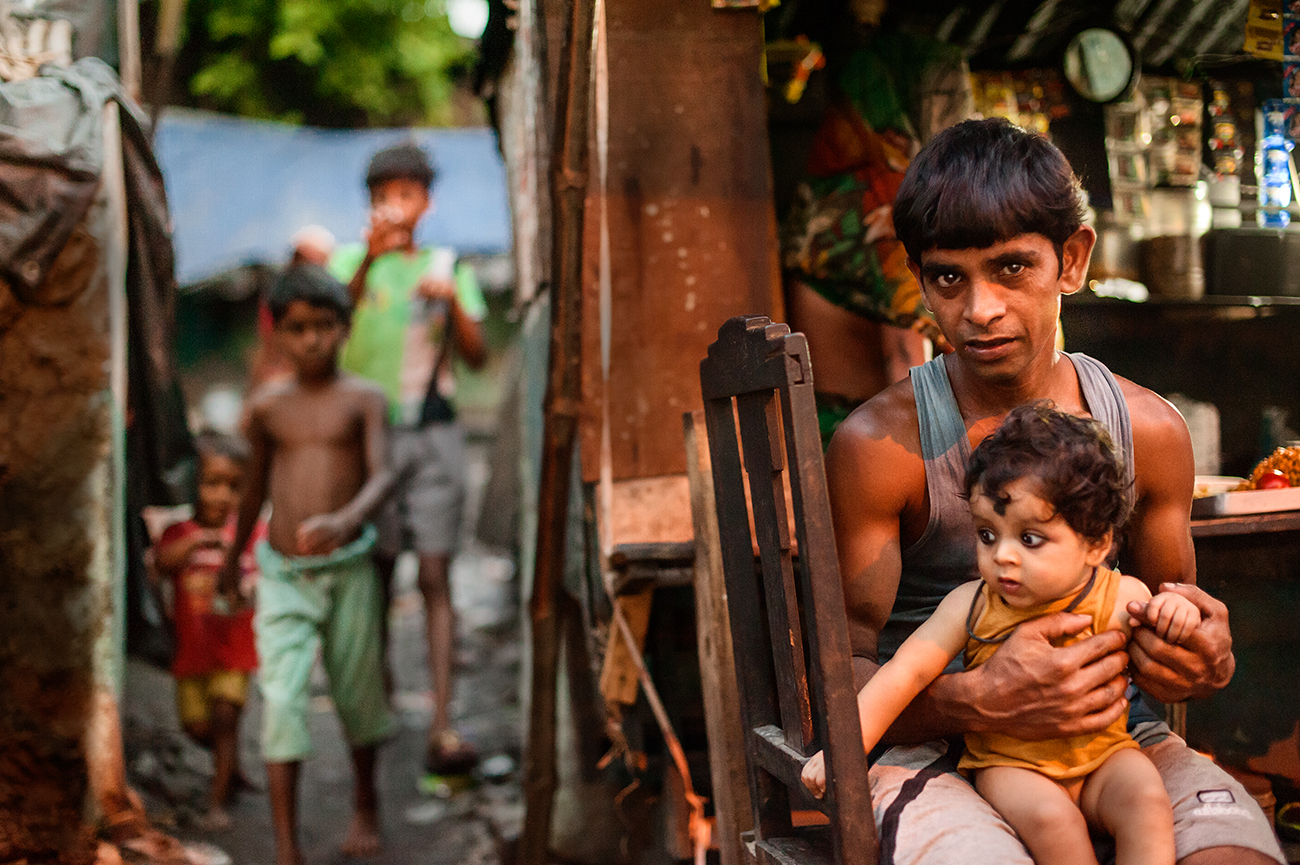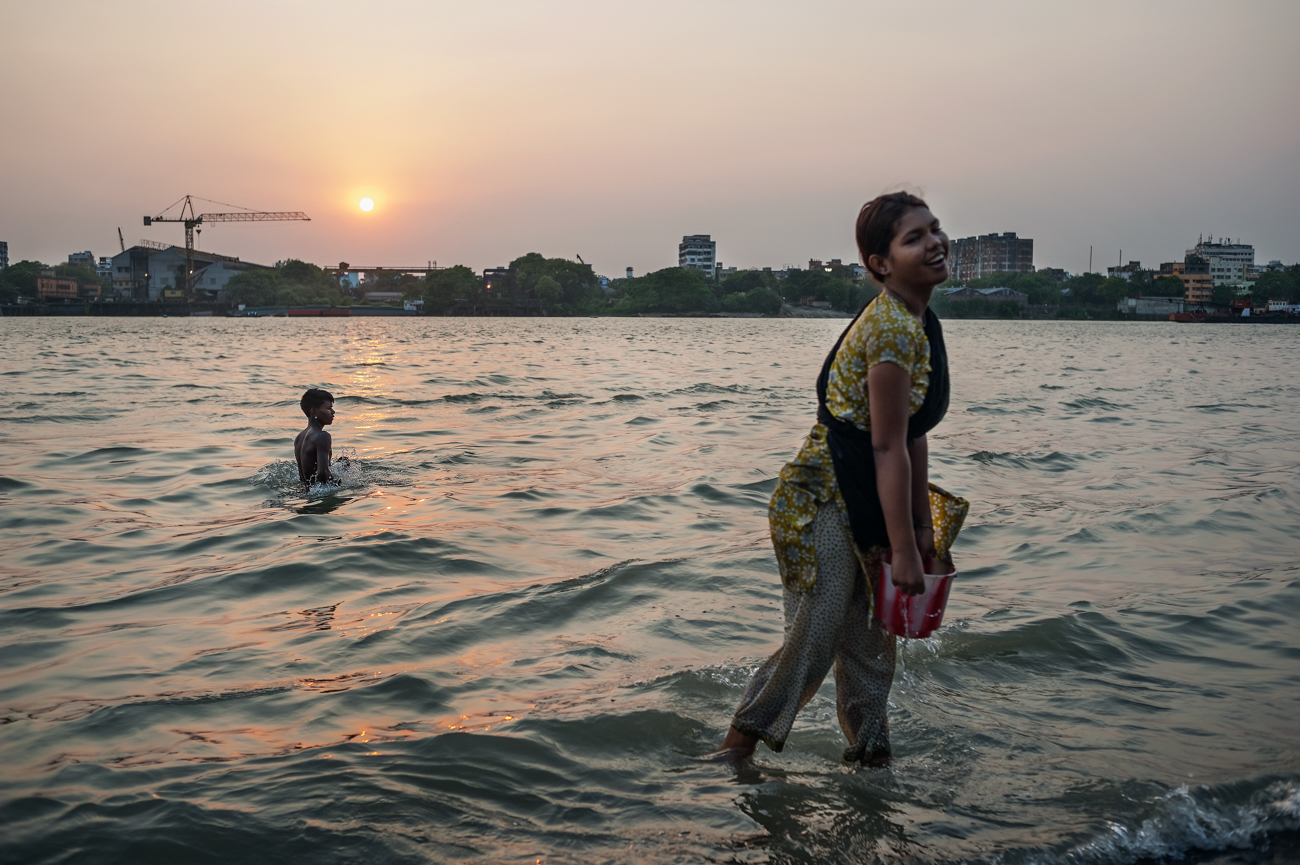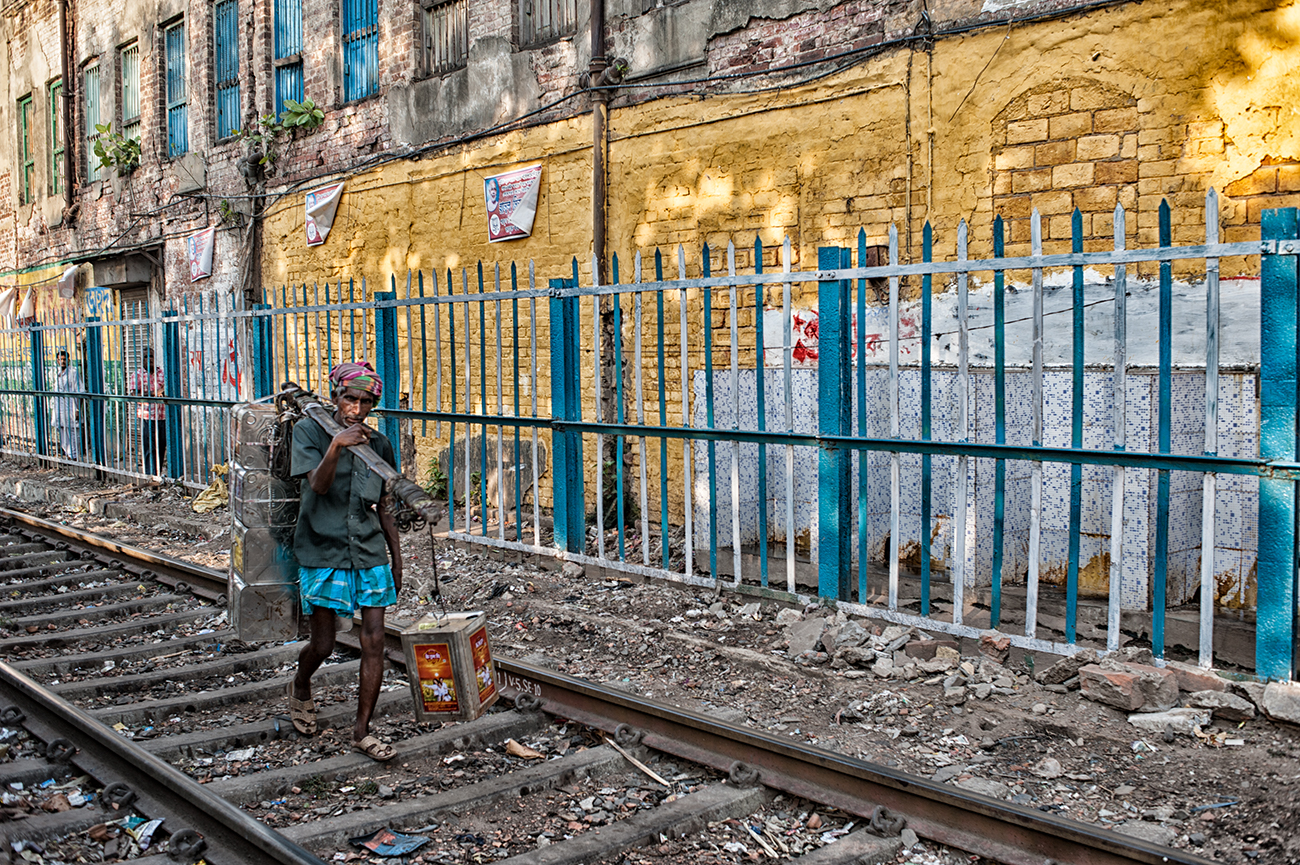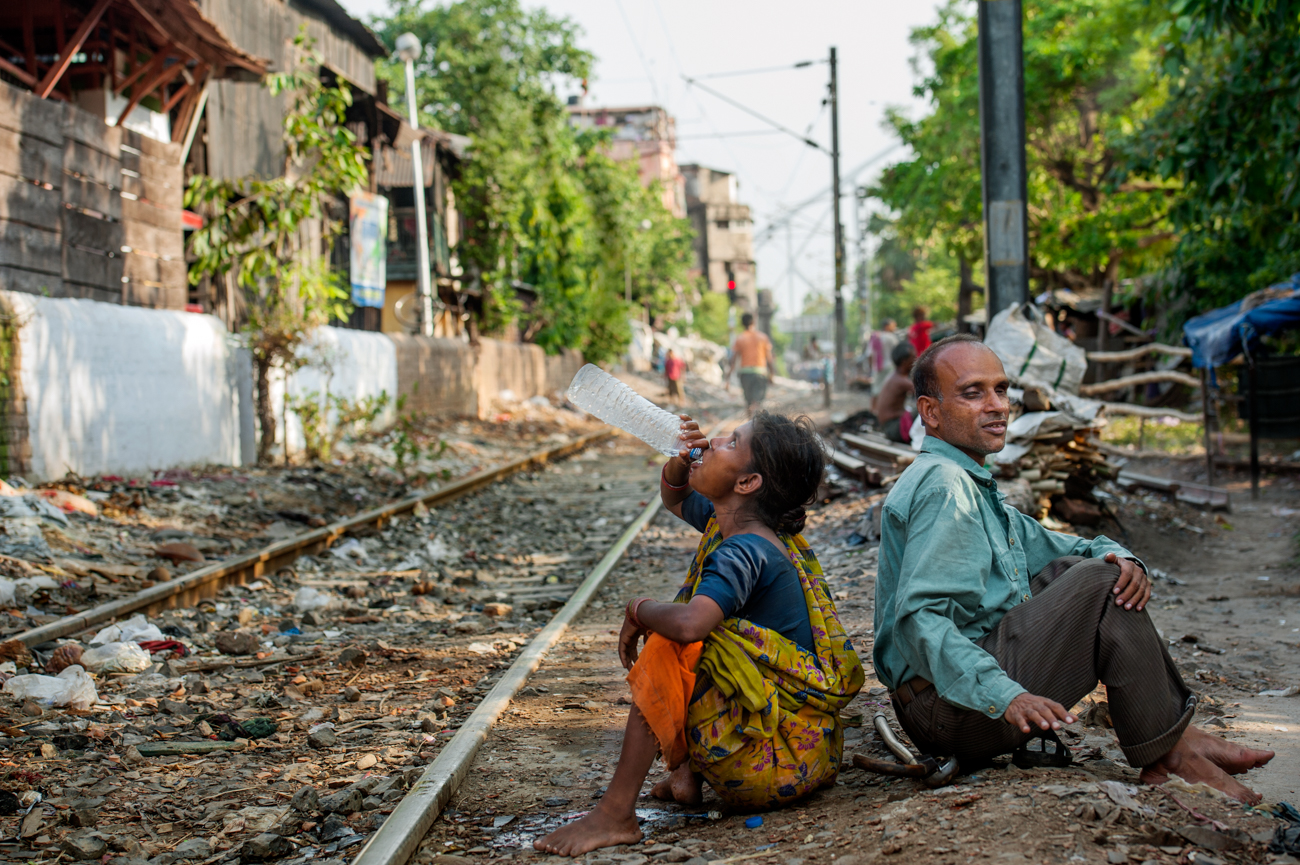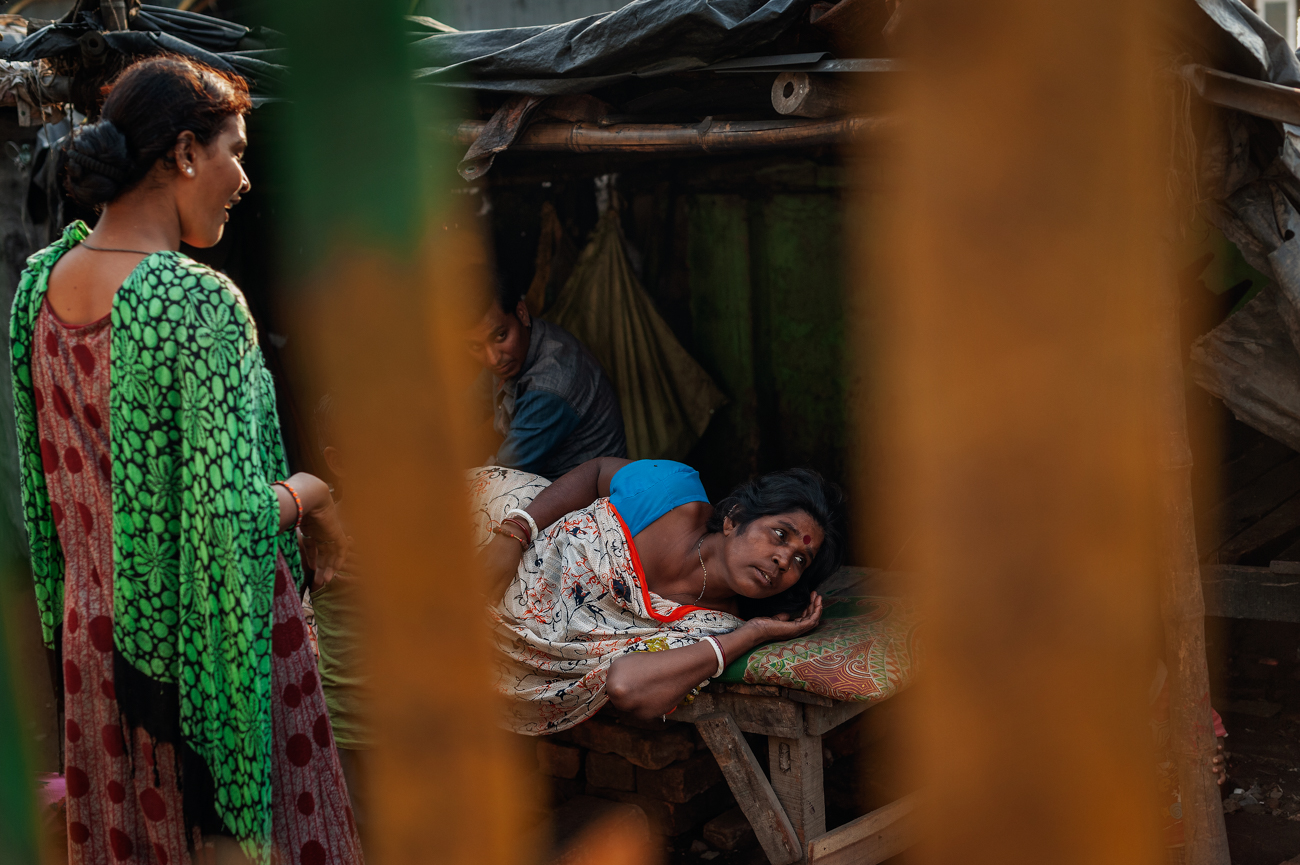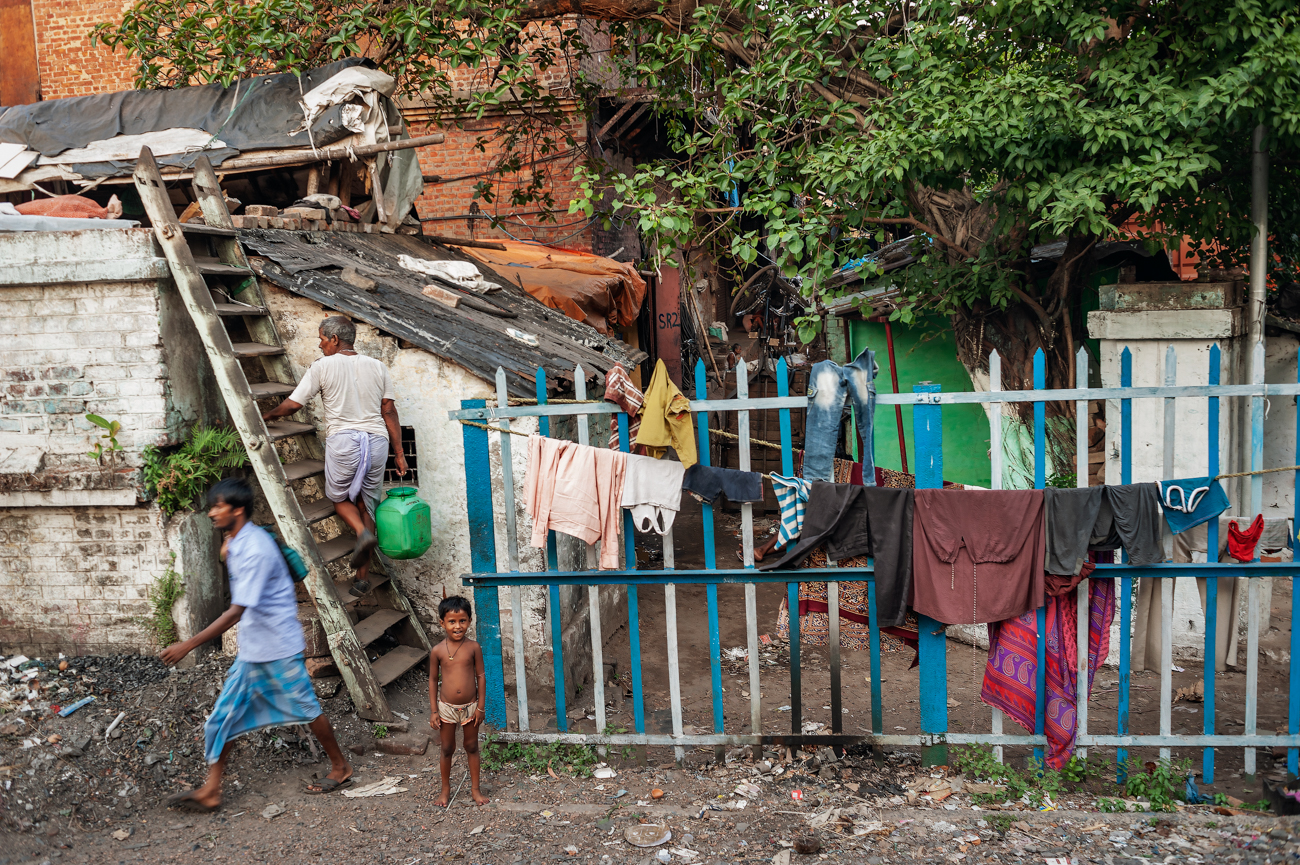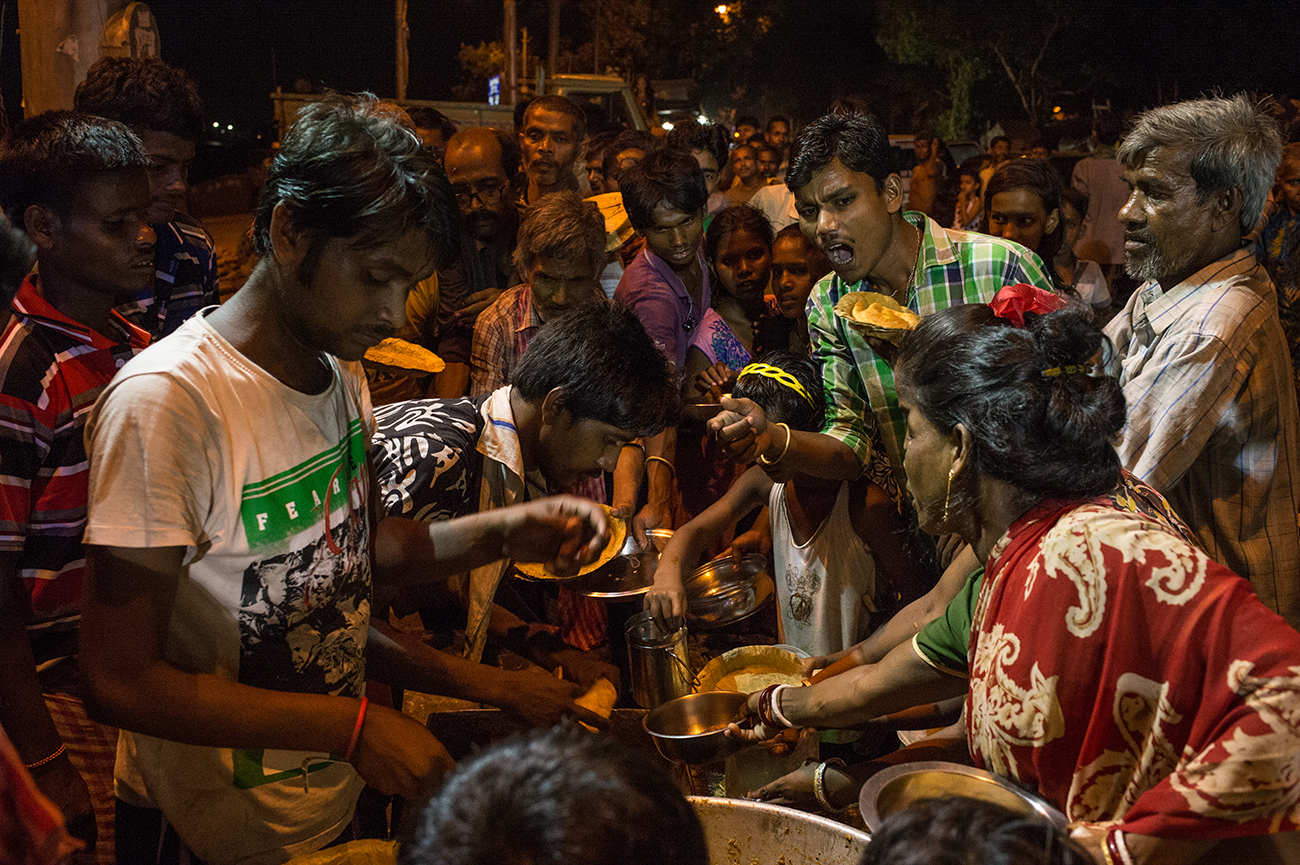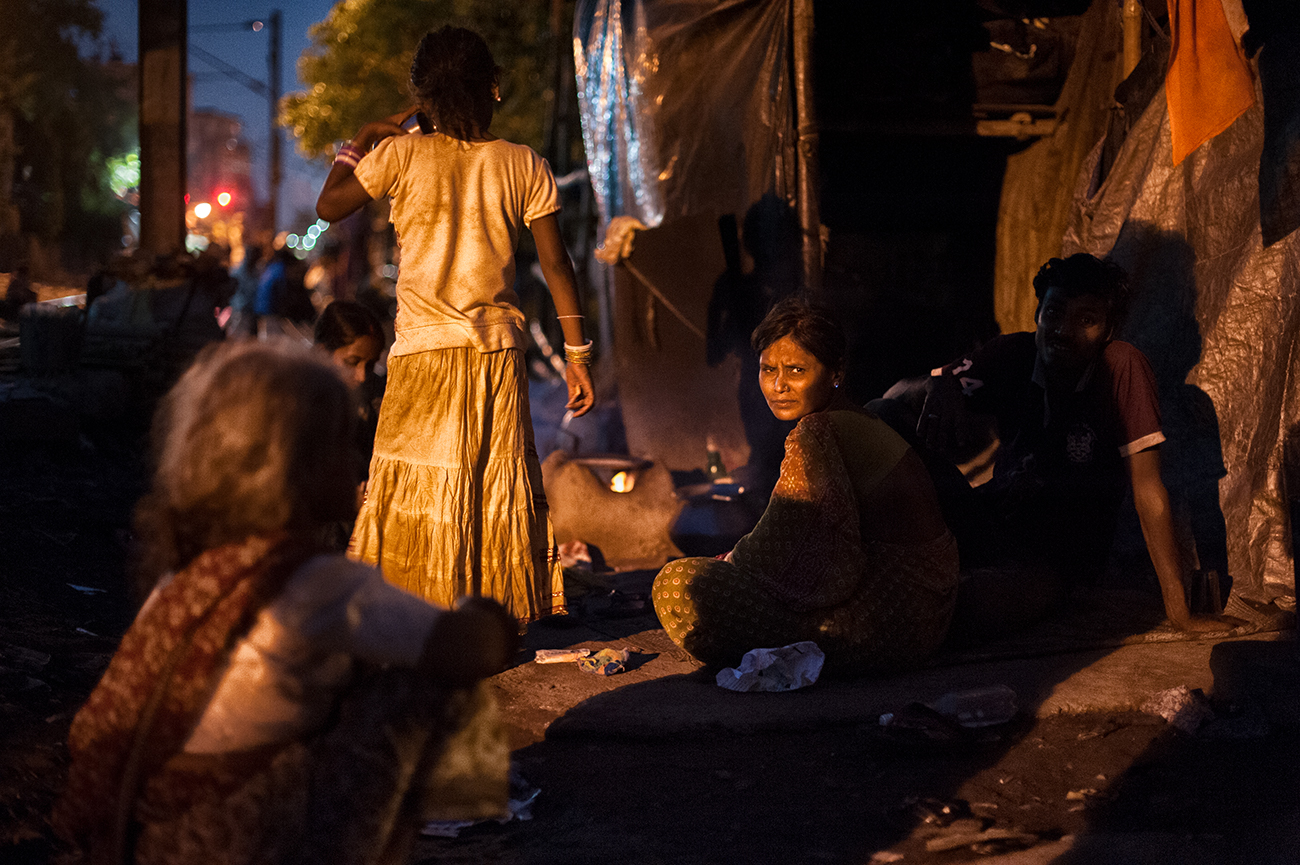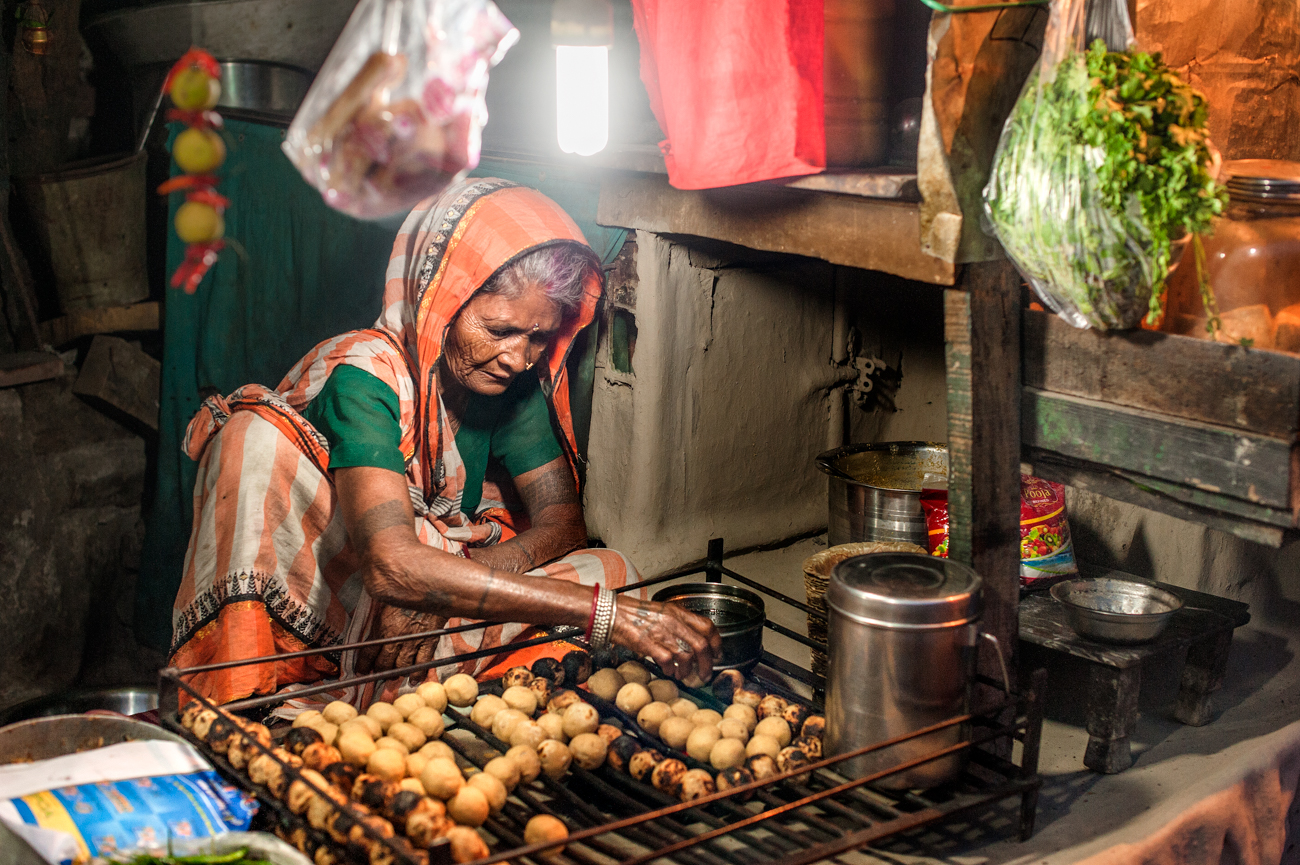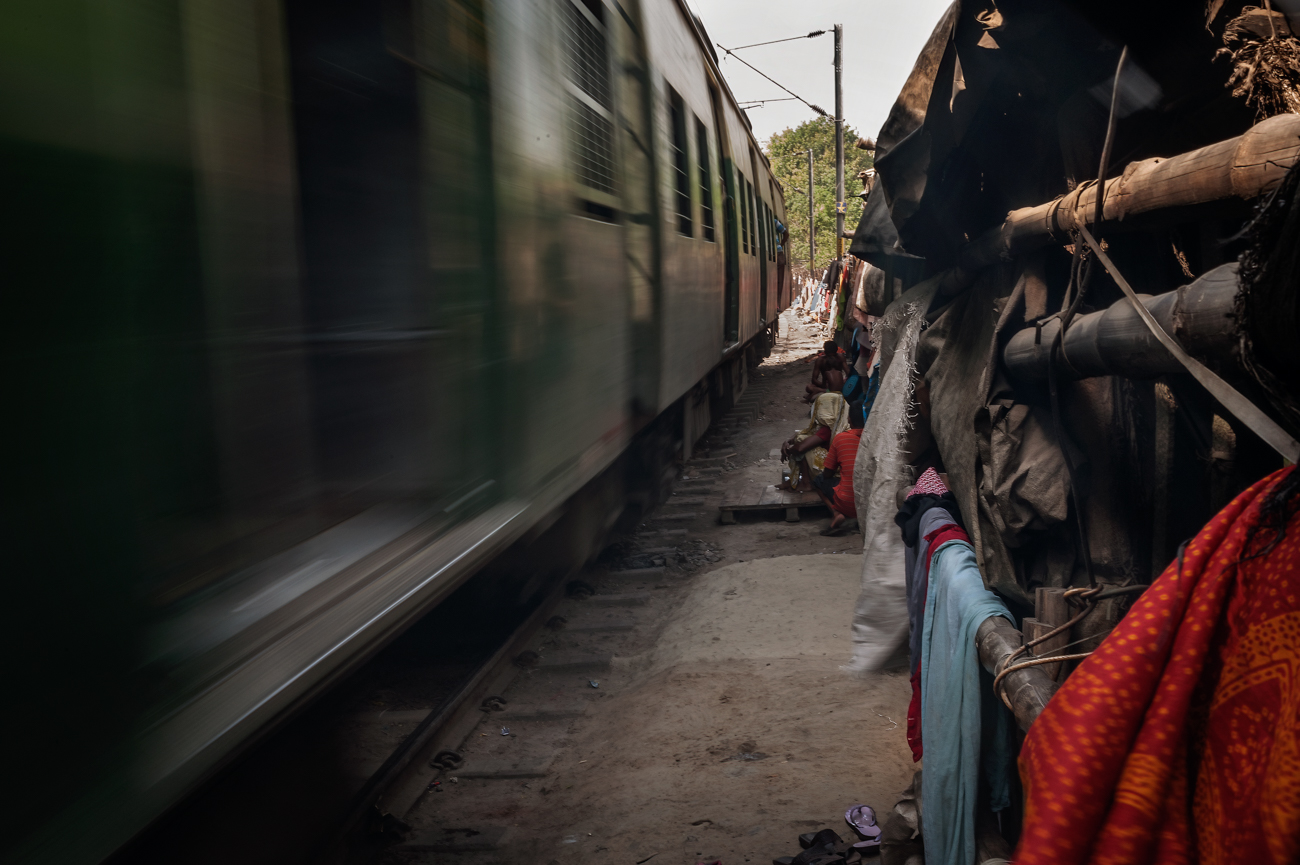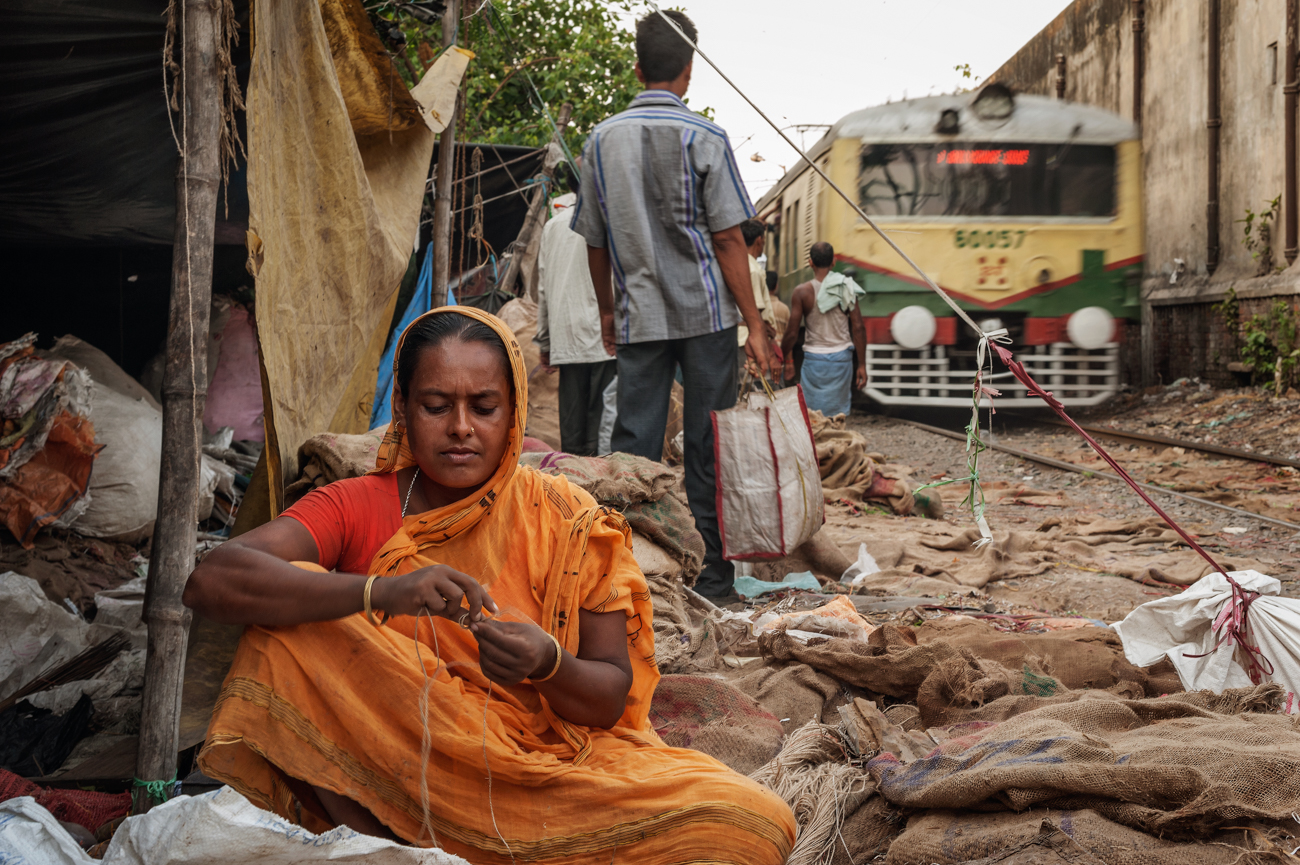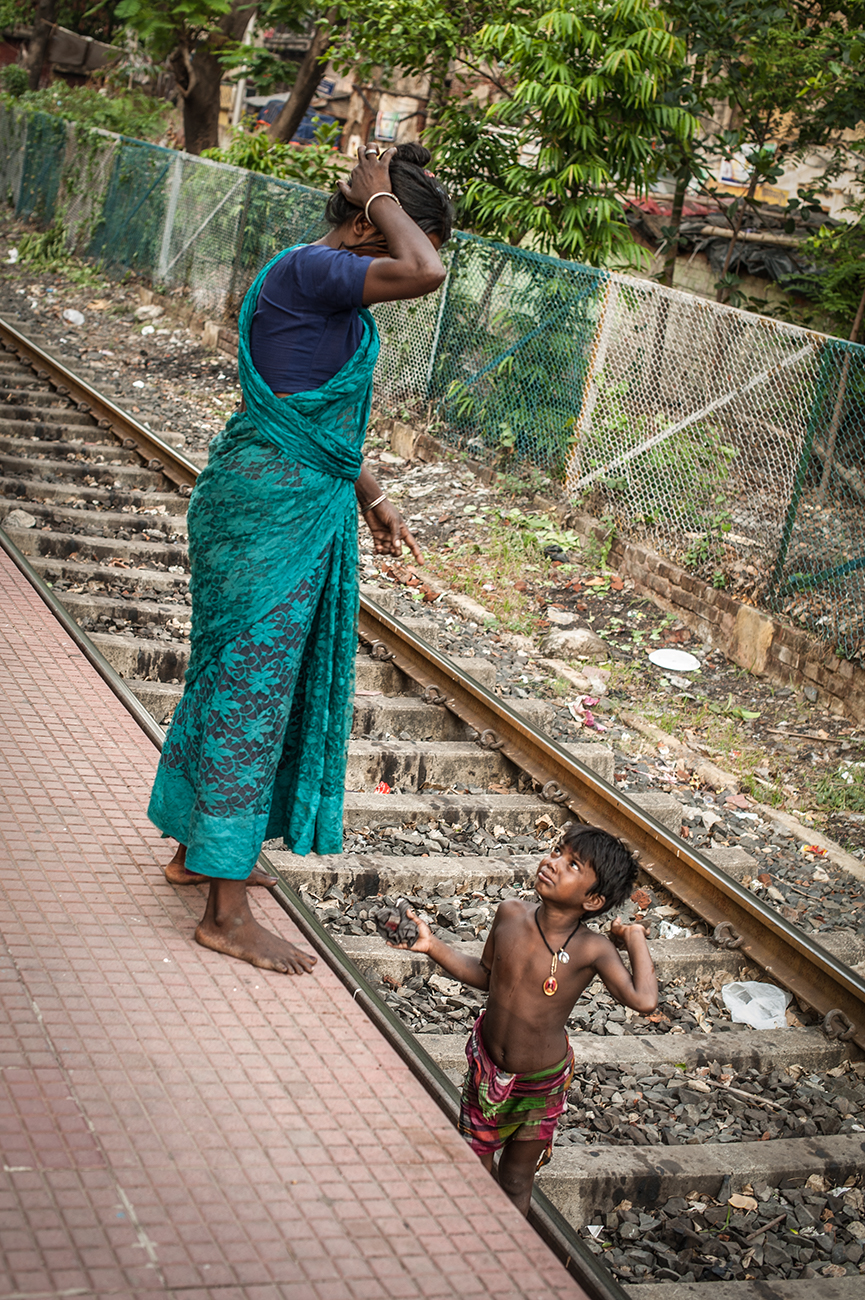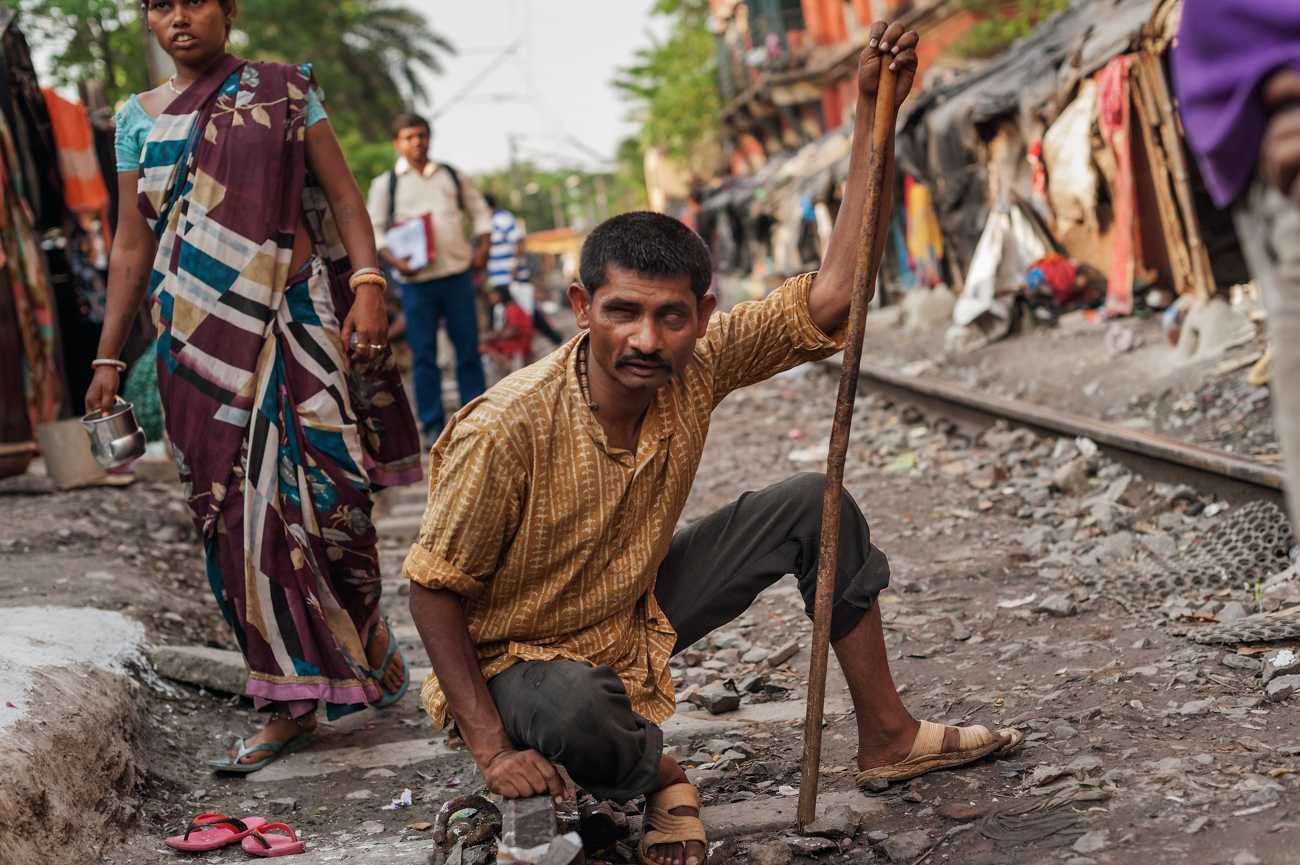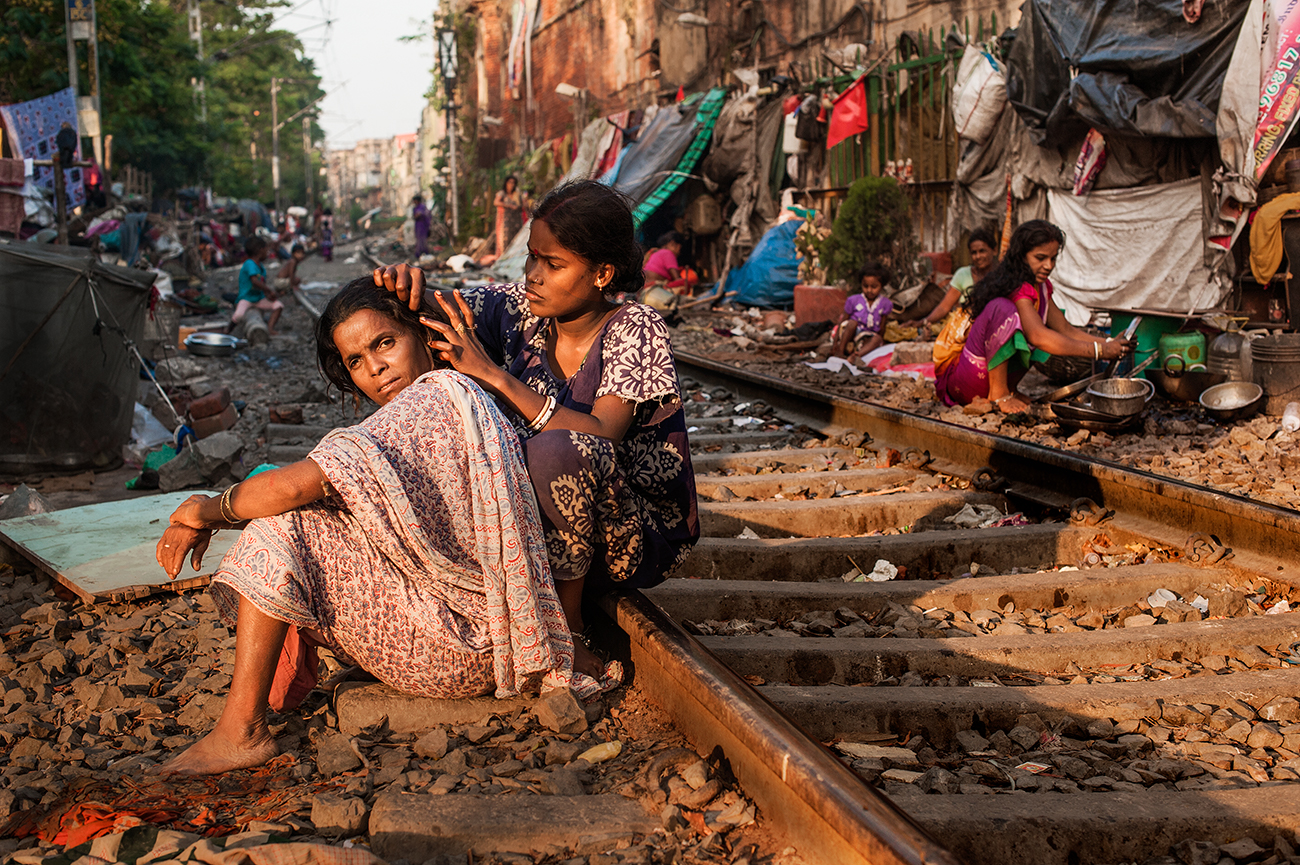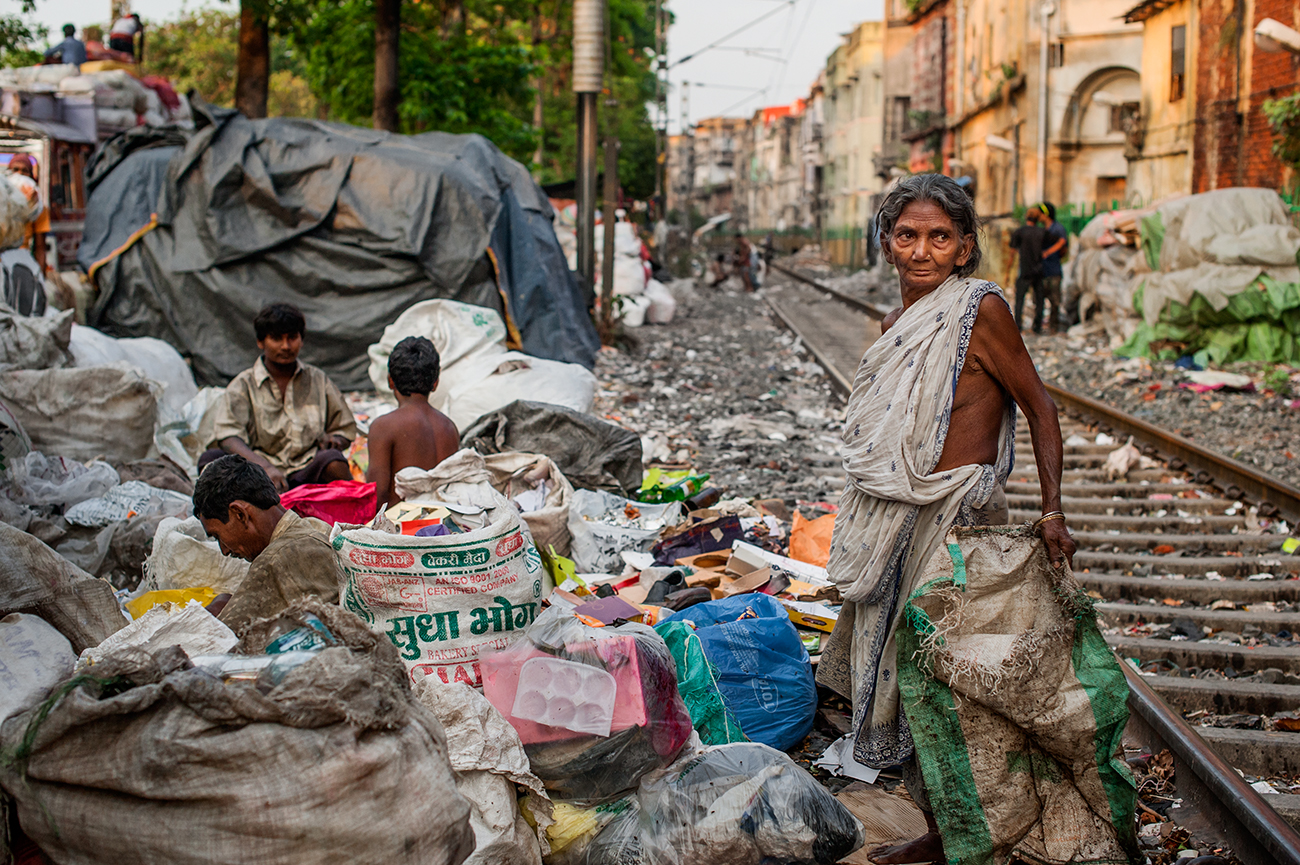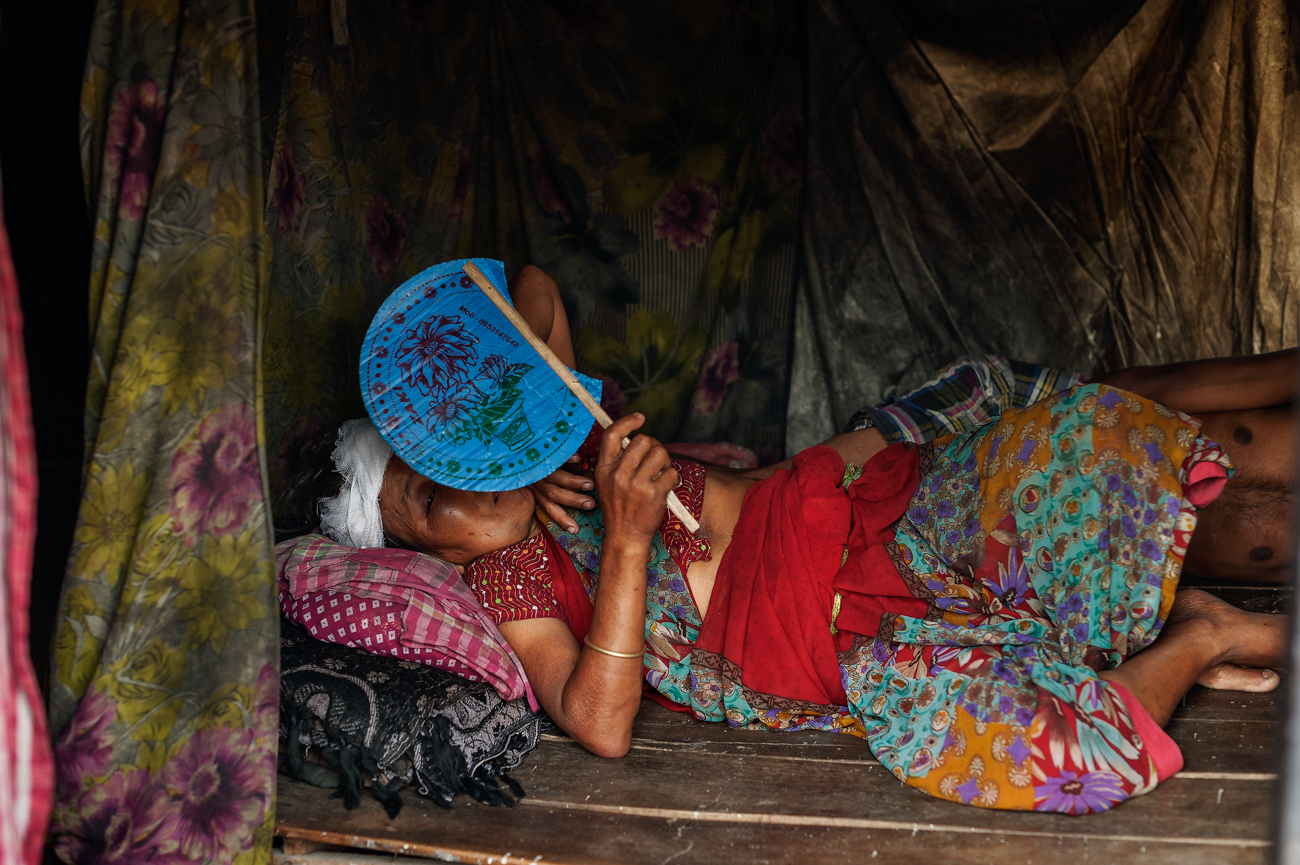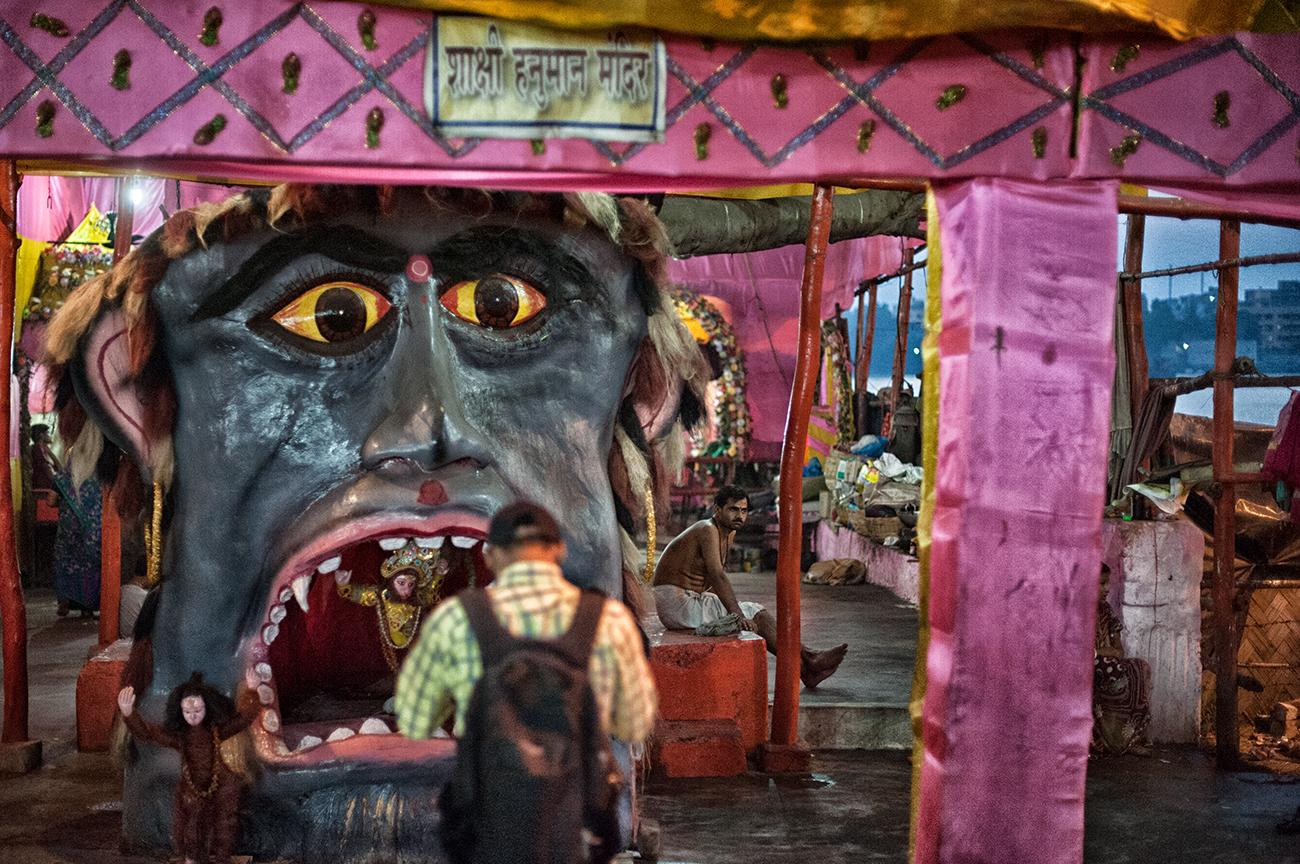Desperate Village. The crematorium slum in Kolkata, India
The main crematorium in the city of Kolkata (Calcutta), in the state of West Bengal, India, is located along the banks of the Hooghly River, a lateral branch of the Ganges. The presence of the crematorium creates a continuous flow of people who follow the cremation ceremonies of the bodies of their loved ones. In the Hindu tradition, such ceremonies must be accompanied by acts of charity towards those most in need. Generally donations of rice and other foods that are distributed or directly cooked on the spot by employees of religious charities. For this reason, not far from the Crematorium, a large slum was born that develops along the tracks of the local railway. Using the gates that delimit the railway line as the basis for the construction of the houses, women, men and children have created an incredible and desperate human community. Largely made up of Dalits, oppressed in the Indian language, as those belonging to the religious caste of the so-called “untouchables” rightly call themselves. Thousands of people who have their own homes and sometimes live less than a meter away from the tracks of an active railway line, traveled about every half hour, with a short night break, by trains. Which, as they pass, raise clouds of toxic dust and risk overwhelming the most inattentive, or the smallest children who, for this reason, are tied with ropes by their parents. The Crematorium slum in this sense represents perhaps one of the most advanced examples of adaptation to urban life in extreme conditions.

